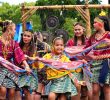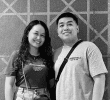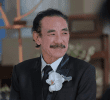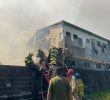From museums to historical markers to works of arts and ethnic fashion, Davao has them. They are more than mementos and souvenirs – they usher the visitor to a glorious past.
By Cheryll D. Fiel
davaoatoday.com
DAVAO CITY – This city has a number of places where every traveler can get the chance to better understand and appreciate it. And we’re not just talking about museums.
Somewhere in the city’s unmarked streets, inside the homes of many old families and the abodes of indigenous tribes of the vast lands here, lie the repositories of Davao’s soul that are waiting to be discovered.
Many say Davao City is in itself a large ethnographic museum where the caretaking of these muses and gods and ghosts of its past is not relegated to institutions alone. There could be a lot more of these places of discovery, as there are more than a dozen ethno-linguistic tribes in the vast Lumad lands of this region.
But a good place to start are the city’s museums.
The Davao Museum. For a quick getting-to-know-the-city tour, nothing beats the Davao Museum.
It has approximately 400 artifacts, some of which are acquisitions of the Davao Museum Foundation through donations while some are on loan from patrons.
This three-decade-old museum, built on a lot donated by Enrique Zobel and Jaime Zobel Ayala, has three galleries. An entrance ticket costs $2.
On the ground floor are two galleries. Gallery 1 would take you back to 19th-century and early 20th-century Davao. Mounted here are old photographs of Davao’s landmarks, and excerpts from the documentations of Davao historians Ernesto Corcino and Macario Tiu.
Among the pictures are that of the Old City Hall building, which stood where the present City Hall is, the old capitol building, where the present City Council stands, and the old San Pedro Street, where shops abound then as now.
Claveria Street, now named Claro M. Recto Street, is shown in a picture as the leisure destination with Ideal Theater in the early 1900s and the Puericulture Center of the Davao Women’s Club, which used to be the grand ballroom in those times.
There is a picture of the old San Pedro Church, which was made of wood in the mid-1900s.
Here, you will also learn that the site of the new Central Bank used to be the Provincial Court and Jailhouse in the 1960s, and that the present site of the Philippine National Bank on Recto Street used to be a bustling three-storey commercial building named after Rafael and Jose Awad, a Lebanese merchant who came to Davao City sometime in 1892 and was the first to hire Japanese workers for his abaca plantation.
The second floor of the museum houses the ethnographic gallery where a colorful showcase of authentic indigenous garbs and accessories, musical instruments, farm implements, weaponry, burial jars, textiles and their arts and crafts are found.
The Japanese Museum. Here can still be found remnants of what used to be a Japanese controlled settlement in the early decades of the 20th century, as well as historical accounts of the community that once existed. Among these are the tools that the Japanese used in the early abaca plantations of the city, including old currencies and publications. It is located in Calinan District.
The Mindanao Folk Arts Museum. It houses a rich collection of artifacts from Moro communities. It is inside the Philippine Women’s College campus in Juna Subdivision, Matina, one of the earliest schools in Davao pioneered by the daughter of General Paulino Santos, Rosa Santos Munda. General Paulino Santos is one of those tasked by pre-war President Manuel L. Quezon to open up new lands in Mindanao for settlers from Luzon.
The Davao Historical Society Museum. Here can be found collections on the subjects of dogged documentation made by members of Davao’s Historical Society. It is located inside the Magsaysay Park.
Along busy road intersections and bridges in the city can be found markers. These are either statues or sculptures that are worth a stop.
The Battle Memorial. The place may be a bustling elementary school now (Mintal Elementary School in Tugbok District) but this place is where the longest battle was fought between American and Japanese troops during the Second World War.
Mintal Historical Marker. This is in memory of a Japanese soldier named Colonel Yamada who is said to have defended Mintal District during the war.
Fort of Datu Bago. The unmarked junction of Washington Street and Quimpo Boulevard is a stronghold of a legendary Muslim hero, Datu Bago, who ruled the early settlements along Davao River when it was yet called Tagloc River.
Memorial to a Brave Son. Passersby may hardly notice the marker on the bridge but in this site died a man who defended with his life the territory from Japanese invaders during the Second World War: Governor Armando Generoso. The bridge would later be named after him, in recognition of his gallantry.
Osme�a Park. This may be the perfect place for a leisurely Sunday for Davaoe�os nowadays. But this is the site of the settlement of early Davaoe�os.
Camp Domingo Leonor. Still referred to as the “barracks” where the Davao City Police Office are headquartered, this served as quarters for Spanish and later American soldiers.
City Hall of Davao. The site is where the former municipal building, constructed in 1926, used to be.
Oyanguren Landing Site. The landing site of Don Jose Oyanguren y Cruz Guipuzcoa, the Spanish conqueror who later became the governor of Davao.
Old Japanese houses. These are Japanese homes, warehouses and abaca processing and drying plants before and during World War II. They can be found in Mintal, Tugbok and Toril districts.
Talomo beach. Some 200 meters from the shore of this public beach frequented by Davaoe�os is said to be a 10-kilometer graveyard of a sunken warship during the Second World War. It is in Talomo District.
San Pedro Cathedral. Said to be one of the oldest church in Mindanao, built in 1847. The old altar is preserved at the right wing of the cathedral.
The presence of various places of worship in the city very much describes the cosmopolitan character of the city.
Lon Wa Buddhist Temple. The tranquil environment of candles and trees with an imposing statue of the Buddha and his life depicted in wood carving is said to be the biggest Buddhist Temple in Mindanao. It is found along Cabaguio Avenue.
Mindanao Taoist Temple. Located along Cabaguio Avenue, this temple houses icons of the Taoist religion.
Japanese Peace Memorial Shrine. This is the pilgrimage site for Japanese war veterans and their kin in August, the month of the “Ubon Yasumi,” or Japan’s version of All Souls’ Day.
Mosques. These places of worships among the Moro people in Davao can be found in Bankerohan, Quezon Boulevard, Panacan, Quimpo Boulevard, among others.
Shrine of the Holy Infant Jesus of Prague. Located in Shrine Hill in Matina.
Davao City also has many portals and corridors for the arts. Aside from the established places of artistic showcase — such as the one inside the Ford Academy of the Arts where the ghost of the touted father of modernism in the Philippine art, Victor Edades, dwells — there are quite a number of workshops here. Among these are the workshop of Kublai Milan in Ponce Gallery, inside Do�a Vicenta Subdivision; and Secuya’s in Juna Subdivision, Matina District.
In Davao City, bars and restaurants use the artistic ethnic ambiance, with pieces on their walls and interiors. Malls, hotels and entertainment arcades also have space for art exhibits.
If you are also scouting for vintage as well as contemporary works of arts and crafts, among the places that you can go to are the Gen Luna Gallery along corner General Luna and Ilustre streets, and Nieva’s Art and Crafts, one of Davao’s premier handicraft stores located at Felbert’s Bldg., Km. 7 in Lanang District.
The Aldevinco Shopping Center, an oft-recommended destination for a tourist looking for souvenirs in the city, is an arts and crafts gallery of its own.
In these places, a visitor may also find souvenir crafts of colorful ethnic patterns, house ornaments and accessories, musical instruments and even fashion accessories. (By the way, ethnic fashion — those dangling earrings, bracelets, necklaces and anklets of beads and brass — is an all-time fashion favorite in Davao.
If you are planning to explore Davao, be sure to include any of these spots in your itinerary. (Cheryll D. Fiel/davaoatoday.com)










